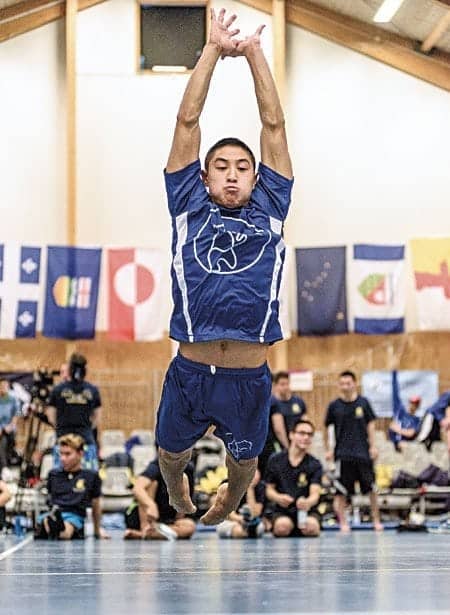I'm sure I could write an entire column on things that make the Arctic Winter Games (AWG) special, but this week I want to focus on a few of the special sports that we feature.
 As the Games take place in the Circumpolar North, we honour the sporting history of our areas by including Arctic sports and Dene games in the AWG.
As the Games take place in the Circumpolar North, we honour the sporting history of our areas by including Arctic sports and Dene games in the AWG.
While there are hundreds of traditional games, the AWG International Committee has chosen a select few to be played at our Games. In the past, these games were developed as a way to strengthen on-the-land survival skills and they were social games that brought people together to compete and show off strength and endurance. While they still serve this purpose, we also play them today as a way to celebrate and promote culture.
So this week, let's talk about Arctic Sports.
In March, when the AWG are co-hosted by Fort Smith and Hay River in the South Slave, athletes will come together to compete in one-foot high kick, two-foot high kick, Alaskan high kick, airplane, arm pull, head pull, triple jump, kneel jump, one-hand reach, knuckle hop and sledge pull. The airplane, one-hand reach, knuckle hop and head pull are reserved for the Open Men's category only.

One-foot high kick – let me tell you, this is an excellent sport. A target (often a seal skin ball) hangs at a set height and then athletes take a running start toward the ball and kick it with one foot. Then, they have to land on the same foot they kicked the ball with. Two-foot high kick is similar, although a little more difficult, as the athlete has to kick the hanging ball with both feet at the same time and then land on both feet as well. In Alaskan high kick, the athlete begins on the floor, grasping one foot with the opposite hand. They then lift off the floor with their free hand and leg, kick the ball and land on their kicking foot. The ball is then raised incrementally higher until only one competitor remains in all of these kicking events.
In airplane, the athlete lies on their stomach and four carriers lift the athlete's fists and feet to carry him along a set course until he is no longer able to maintain a firm and rigid body position. In 2016, this event was changed from being measured in distance to being measured by time. The previous record, measured by distance, was nearly 50 metres. In Greenland two years ago, the first time-based record was set at 46.69 seconds.
Arm pull is sort of like arm wrestling, except that two athletes lock their legs and arms and try to pull their opponent's arm out of the lock instead of pushing their arm down. Head pull is similar to tug-of-war, where two competitors' heads are encircled by a leather strap and then they have to steadily crawl backwards, attempting to pull their competitor's hands over a line on the floor or the strap off of their head.
Kneel jump and triple jump are tests of how far the athlete can propel themselves forward, either from starting in a kneeling position and jumping up and forward, or taking a running, walking or standing start followed by three consecutive jumps with both feet together. If you jump the farthest, you win!
Then we've got one-hand reach, where the athlete balances their body on the palm of one hand while attempting to strike the target (like in the kicking event, usually a seal skin ball) with their other hand. The ball is raised until only a single competitor is left.
Knuckle hop is quite like it sounds: athletes make fists, then in a plank position with only their knuckles and toes touching the floor, they hop forward without lowering their body. The competitor able to hop the farthest wins.
Next up is sledge pull, which is similar to the hurdles you see athletes jumping over at the Olympics. Ten sledges are set up on a row and athletes must jump with their legs together over the sledges without touching them. They are allowed a maximum of five seconds to turn around at the end of the row before turning to start again. The record number of consecutive jumps in the Open Male category is 830, while records in the other categories range from 225 to 393 jumps. All of these records are held by athletes from Yamal in Russia.
Make sure you check back next week when I'll be talking about the Dene games you'll see at this year's AWG: finger pull, hand games, snowsnake, stick pull and pole push.